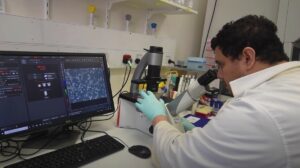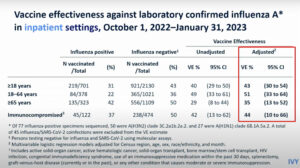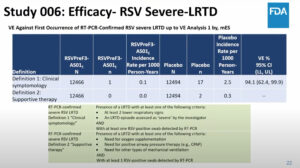NEW YORK (Reuters Health) – Patients with rhinoconjunctivitis due to tree pollen allergy suffer fewer symptoms after 18 months’ treatment with a depigmented-polymerized pollen extract, according to a European study.
Conventional subcutaneous immunotherapy (SCIT) carries with it a risk of systemic side effects. To get around that, allergoids have been developed by polymerizing allergen extracts with glutaraldehyde to reduce specific IgE binding while retaining T cell reactivity. Pigments are removed to increase solubility and inactivate enzymes.
“The reduction in IgE binding…allows for a very rapid up-dosing schedule for immunotherapy,” researchers led by Dr. Oliver Pfaar at University Hospital Mannheim, Germany, report in a July 19th online article in Allergy. They say that a shorter induction phase should improve patient compliance.
The investigators tested the efficacy, safety, and immunologic features of an allergoid derived from hazel, alder and birth pollen (Depigoid, Laboratorios LETI SL, Tres Cantos, Spain). Subjects were 137 adult, birch-sensitized patients randomized to Depigoid and 47 to placebo.
Allergoid SCIT consisted of four increasing doses at weekly intervals followed by maintenance injections every 6 weeks for 18 months. The authors assessed patients following treatment completion during the 2008 birch pollen season, starting when pollen counts were at least 250 grains/m3 per 24 h for 3 days straight.
The patients kept diaries where they rated rhinitis, conjunctivitis and asthma symptoms on a scale from 0 (no symptoms) to 3 (severe symptoms).
Median symptom and medication score stayed between 2.1 and 2.4 as pollen counts ranged between 250 and 500 grains/m3 per day in the Depigoid group while they varied between 3.6 and 4.2 in the placebo group (p < 0.01).
Dr. Pfaar’s team defined treatment response as a 30% reduction in the area under the curve of symptom and medication score, compared to the median placebo value. Response rates were 64% in those treated with the allergoid and 36% in those treated with placebo (p < 0.01).
There were 17 grade 1 or 2 systemic reactions during treatment in 9 actively treated patients and only one in one placebo patient, but no grade 3 or 4 reactions.
The investigators found that birch pollen-specific IgE levels stayed the same throughout the study. However, serum IgG4 levels increased in the Depigoid group while decreasing in the placebo group (p < 0.01), “a further sign of retained immunogenicity.”
They conclude that depigmented-polymerized tree pollen extract was as effective as native birch pollen extracts and at least as safe.
According to Dr. David Rosenstreich, chief of the Division of Allergy and Immunology at Albert Einstein College of Medicine, Bronx, New York, (who was not involved in this research), “The basic problem with native allergens is that you have to give small doses frequently to get good desensitization. It’s a long, drawn-out process, associated with a lot of allergic side effects, and risks in terms of severe allergic reactions and occasional death.”
He said that “allergoids” have been around for 25 years; the the first ones “never had any side effects but they weren’t very effective either.”
Allergoids treated with glutaraldehyde have achieved more success, since the polymerization causes the allergen to “clump up,” staying place after injection and giving an appropriate immune response.
One reason these chemically altered allergens have not caught on in the U.S. as well as in Europe, he suggested, is because they require new drug approval, whereas conventional allergens were “grandfathered in and not officially tested by the FDA.”
This study was funded by Leti Pharma GmBH, Germany.
Reference:
Immunotherapy with depigmented-polymerized mixed tree pollen extract: a clinical trial and responder analysis
Allergy 2010.




